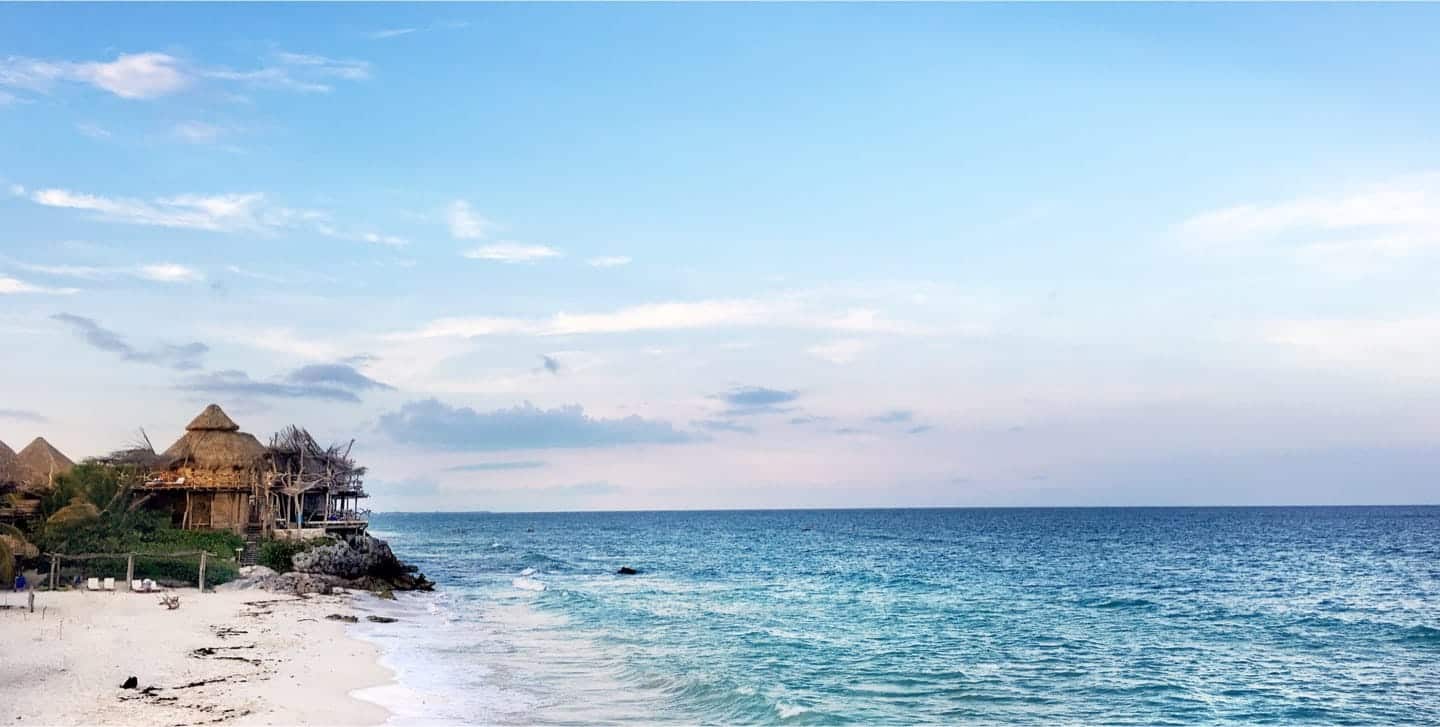Mexico’s Yucatan Peninsula is world-famous for its countless, atmospheric ruins which, together with its stunning beaches, draw in visitors from every corner of the globe.
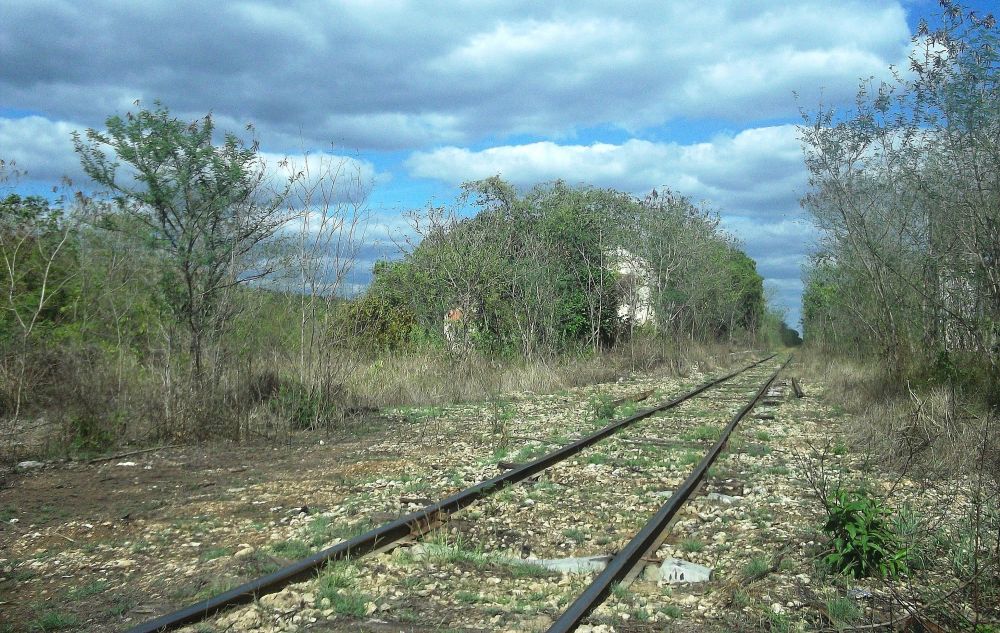
What is the Yucatan Peninsula?
First off, a little geography lesson for those who aren’t yet acquainted with Mexico and the Yucatan Peninsula.
Mexico is divided into 31 states with 3 of those states – Yucatan, Campeche & Quintana Roo – collectively forming what is commonly referred to as the Yucatan Peninsula, the region in the south east of Mexico that juts out between the Gulf of Mexico & Caribbean.
Cancun is the largest resort / city in the region and, regardless of one’s impressions, its airport serves as the second largest gateway to Mexico. Fly in, move on……
|
|
|
 |
Beyond The Ordinary arrange fully bonded, tailor made holidays and tours to Mexico’s Yucatan Peninsula. Contact one of our destination experts on 01580 764796, email travel@beyondtheordinary.co.uk or contact us via our website. |
|
|
|
Mayan ruins of the Yucatan Peninsula
When most people refer to Yucatan Peninsula ruins, chances are that they are specifically referring to the region’s historic Mayan ruins.
Clients will often contact us and say that they wish to ‘visit the Mayan ruins’. While understandable, that is a bit like saying that one wants to visit the British churches – there are an awful lot of them and they come in all manner of shapes and sizes.
Top of the pile, and the mother ship of Mayan ruins in the Yucatan Peninsula is undoubtedly Chichen Itza (1) The most extensively excavated and restored Mayan site in the region, Chichen Itza also receives by far the most visitors.
Also in the Premier league of Mayan ruins in the Yucatan Peninsula are Uxmal (2) Calakmul (3) & Tulum (4). The last of these, Tulum, isn’t the most impressive in terms of its size or buildings, but draws in visitors by the coachload, quite literally, due to its incredible location overlooking the Caribbean (#instagram). In contrast, Calakmul is far larger than Tulum but draws only a fraction of the visitor numbers due to its isolated location.

One rung below these sites, in the Mayan Ruins Championship, are sites such as Ek Balam (5), Coba (6), Edzna (7), & Mayapan, (8) all impressive, relatively large scale sites that are well worth visiting.
Finally, below these top 2 tiers, there comes a vast number of much smaller, often barely visited ruins. Although they may lack the scale, grandeur and levels of excavation as the aforementioned sites, the lack of visitor numbers – you may often have whole sites to yourself – more than makes up for this in our opinion.
It is impossible to list all of these sites – there are hundreds of them – but notable sites include: Kuluba, Yaxuna, Ake, Kabah, Labna, Sayil, Xlapak, Oxkintoc, Chacmultun, Becan, Chicanna, Kohunlich (9), Rio Bec, Chacchoben (10), Muyil & El Rey (11),– the last of these is actually smack in the centre of Cancun.
Colonial Era Ruins of the Yucatan Peninsula
While the Yucatan Peninsula may be most famous for its Mayan ruins, there are also a number of atmospheric ruins dating back to the region’s colonial period that are equally worth visiting.
Foremost amongst these ruins are the remains of the many henequen haciendas that once thrived in the region, but particularly in Yucatan state.
Known as ‘green gold’, henequen was used to make rope, a vital requirement in 19th century global shipping, agriculture and commerce. Such was its importance to the region that, by the start of the Great War, some 70% of Yucatan was given over to growing henequen.
At the heart of these estates, or haciendas, were grand properties that merged both working farms and luxurious homes.
By the 1950s however, boom turned to bust as synthetic fibre was used to make rope, signaling the near immediate collapse of the henequen trade. Like a set of dominoes, the hundreds of haciendas that once flourished across the Yucatan Peninsula went bust, closed and were then abandoned, soon turning to ruin.
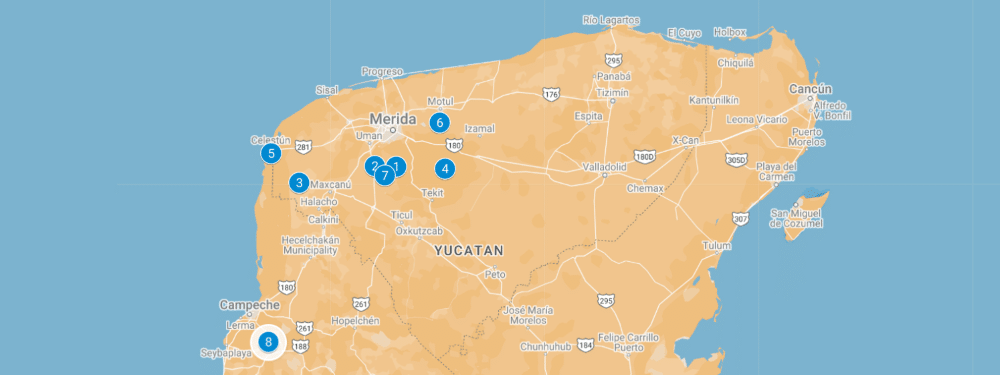
Today, a number of these ruins are open to visitors while others are officially closed but easy enough to explore if you know where to go.
If you’re keen on visiting multiple, ruined haciendas, the good news is that the vast majority are located within easy reach of each other, just south of Merida, with no less than four of them very close to each other.
The most visited of these ex-haciendas is the Hacienda Sotuta de Peon (1) which has been turned into a working museum, the only one of its type in the Yucatan Peninsula, where visitors are taken on a 3-hour tour of the estate and introduced to the process of growing and processing henequen.
Just south of Sotuta de Peon, Hacienda Mucuyche also offers guided, group tours of the property but also has its own cenote for visitors to cool off in afterwards.
Also, close by, Hacienda Yaxcopoil (2 – pictured below) is an atmospheric, largely ruined hacienda that is now popular for local functions but which (when not being used) is also open to casual visitors (closed Sunday).
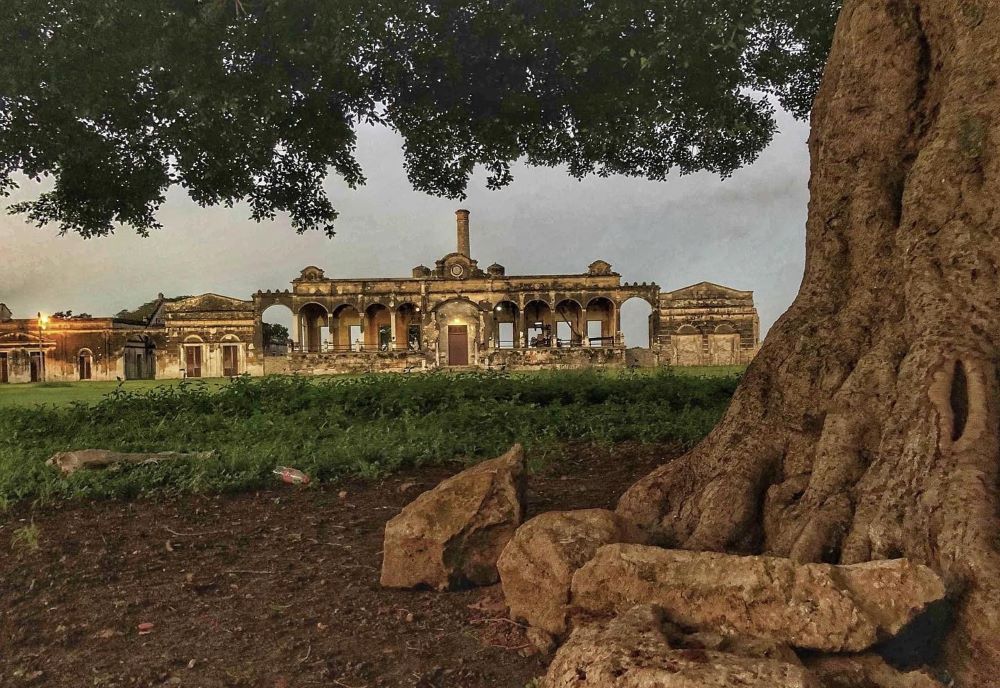
The last of these four, closely located haciendas is Hacienda Uayalceh where, at the time of writing, one can visit the ruins of this grand old hacienda without a ticket.
Other haciendas worth visiting include Haciendas Chunchucmil (3) & Kampepén (4) as well as Hacienda Real de Salinas (5) on the Gulf of Mexico which can easily be combined with the nearby Celestun Biosphere.
Last of all, Hacienda Kochol is one of the remoter old haciendas, but is ideal for anyone staying at the lovely, nearby Hacienda Santa Rosa, one of the most beautiful and peaceful hotels in the region.
And on that subject, one of the most appealing reasons to visit the Yucatan Peninsula is the opportunity to stay in an old hacienda that has been partially restored – ie parts are still in atmospheric ruins – and converted into accommodation. We are happy to make suggestions but examples include the aforementioned Santa Rosa as well as the San Jose (6), Temozon (7 – pictured below) & Uayamon (8).
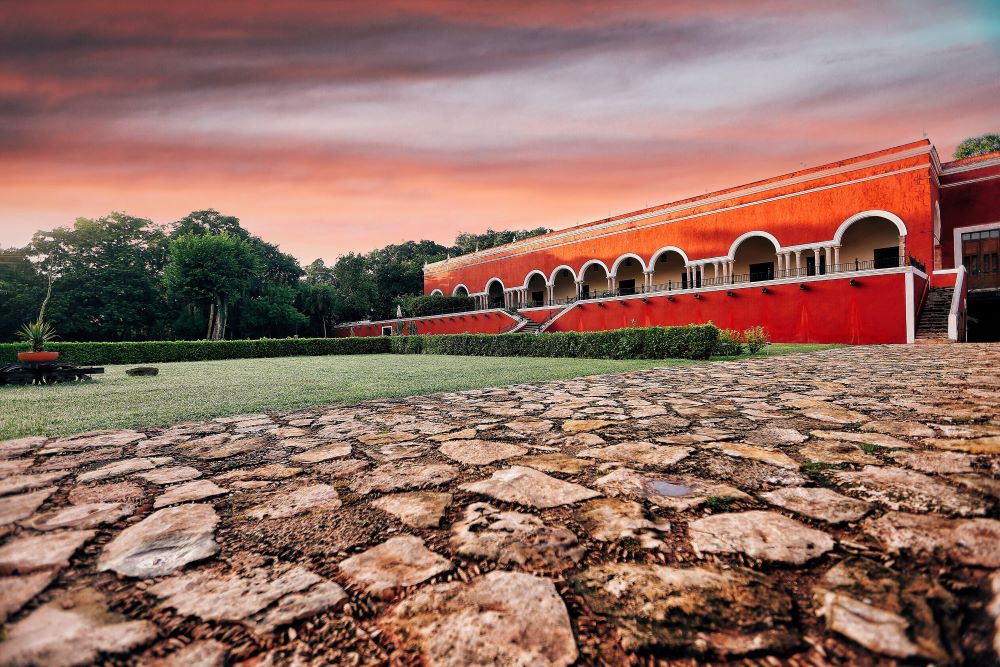
As well as commerce and the hacienda system, the Spanish colonizers also brought Christianity to the Yucatan Peninsula and, with it, the building of a significant number of churches and monasteries.
While the Yucatan Peninsula is still a relatively religious region, many of the original churches, and particularly monasteries, were either damaged beyond repair during sporadic uprisings (most notably the long running Caste Wars) or simply abandoned for other reasons such as depopulation or lack of water.
The most famous of these ex monasteries – they are in relatively good condition so not really ruins – would have to be Convento San Padua in Izamal (pictured) & Convento San Bernadino in Valladolid.
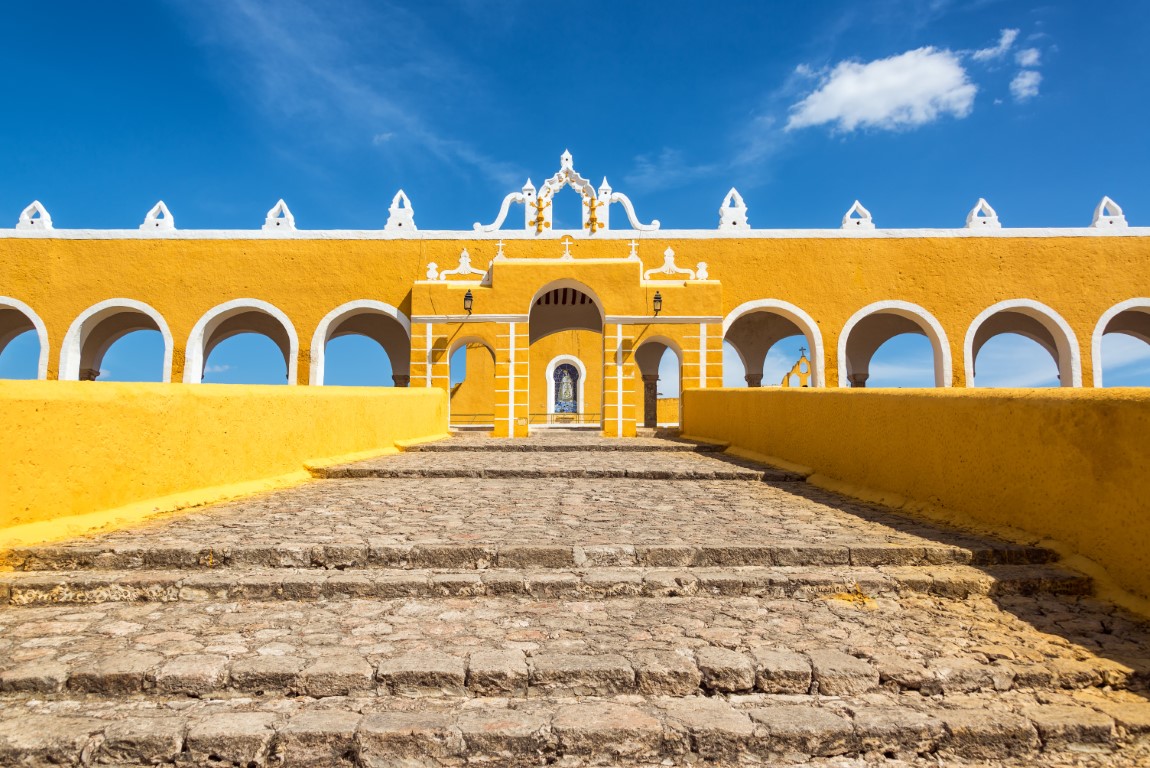
Away from these well-known, tourist draws, there are ruined churches and monasteries that are either worth seeking out in their own right, en-route to somewhere or part of a double-header.
So, for example, there are the ruins of old monasteries at Kikil and Tahcabo, a short distance from each other and within easy reach of Valladolid.
For anyone wishing to drive cross country between Valladolid / Chichen Itza and South of Merida / Uxmal, it is worth stopping in the small town of Tihosuco for the partly roofless Templo del Santo Niño Jesús – just about still in use as a church today! – as well as for the ruins of Lal Kah just to the south.
Forts
The Yucatan Peninsula is also home to a small number of colonial-era forts, built to protect the fledgling Spanish colony from attack, both from indigenous Maya and marauding pirates.
The most impressive of these forts is undoubtedly Fuerte de San Miguel some 4kms from the centre of Campeche and, located at the top of a steep hill, enjoying panoramic views out over the Gulf of Mexico.
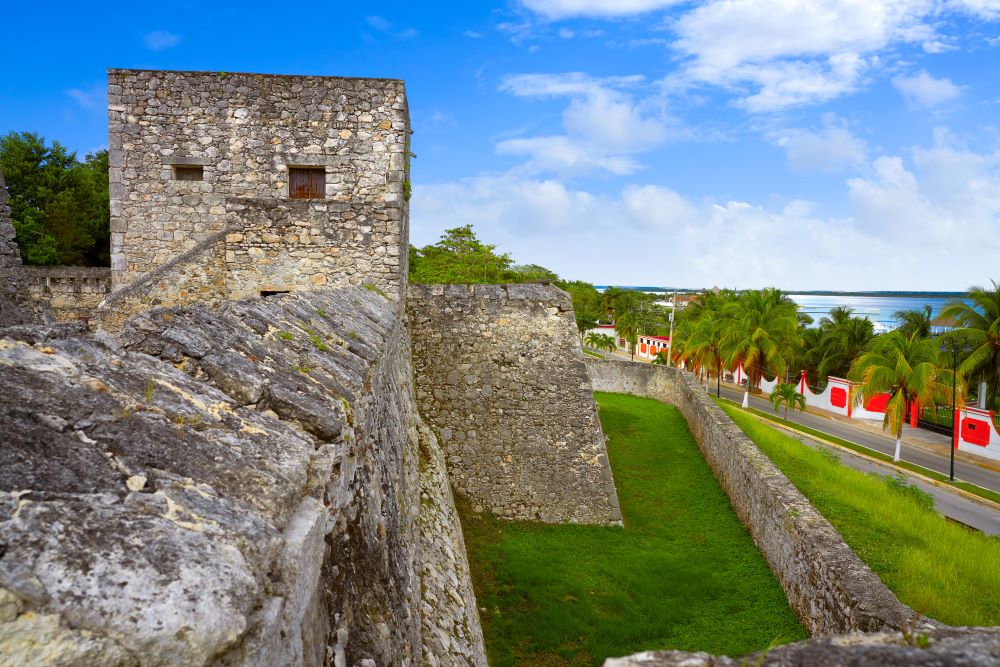
(Not only is the fort impressive in its own right, it is also home to the Museo Arqueológico de Campeche with important Mayan pieces from Edzna, Calakmul and nearby Isla de Jaina).
Within Campeche itself, parts of the old city walls and connected bastions are also still intact.
On the other side of the Yucatan Peninsula, and on a significantly smaller scale, is Fuerte de San Felipe (pictured above) which was built in the mid-18th century to protect Laguna Bacalar against enemy incursions.
Urban Exploring
Last, but perhaps most impressive of all, is Misnebalam, a complete ghost town just north of Merida on the way to Progreso.
Centred around Hacienda Misnebalam, the adjoining village was once home to over 170 residents, with the last family only moving out in 2005.
Within the surrounding villages, Misnebalam has something of a reputation for being haunted, in part due to the sad history of the hacienda and the murder, in 1921, of both its owner and his son. So, while the village attracts its fair share of crack pots and petty vandals, it is generally safe to visit during the day. The biggest obstacle to visiting is the condition of the road in which, with nobody to maintain it, gets worse by the year.
If what you have read has tickled your interest in travel to Mexico’s Yucatan Peninsula, please don’t hesitate to get in touch with us by phone or email. Before doing so, you might find our Itineraries page helpful although, as 99% of our holidays are entirely tailor made, please bear in mind that the itineraries featured really are no more than the tip of the iceberg. Or Mayan pyramid.


